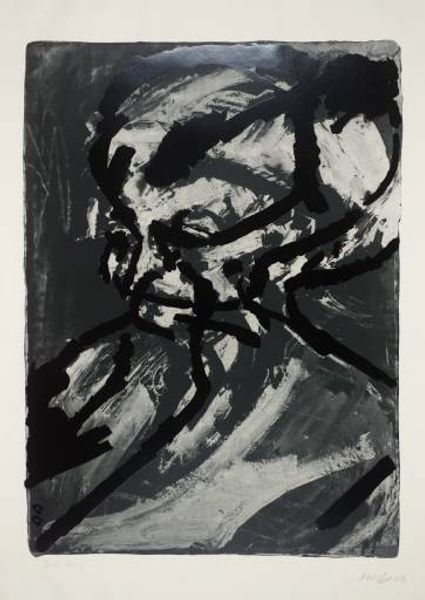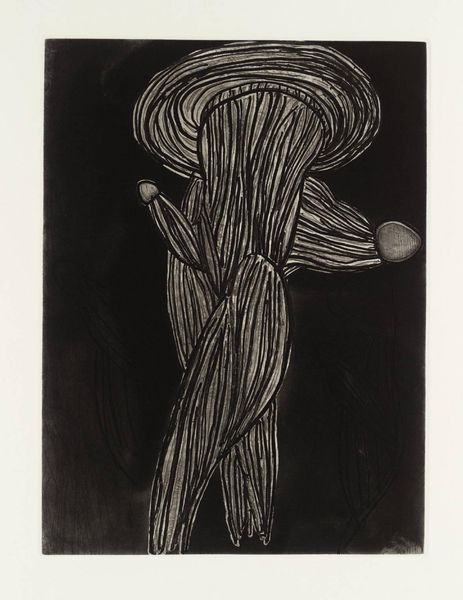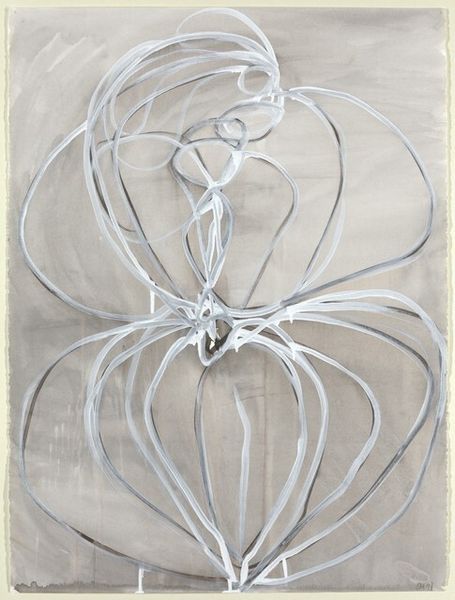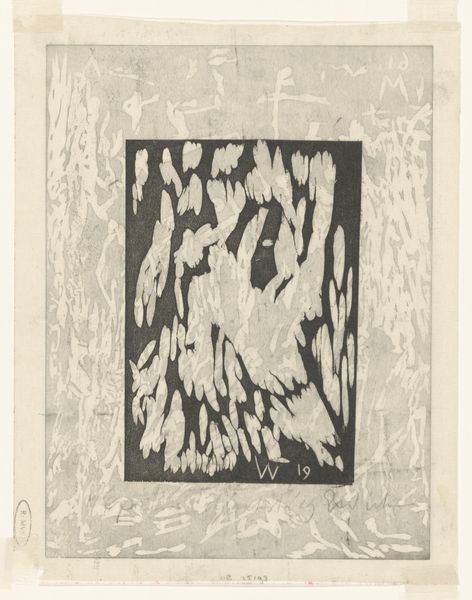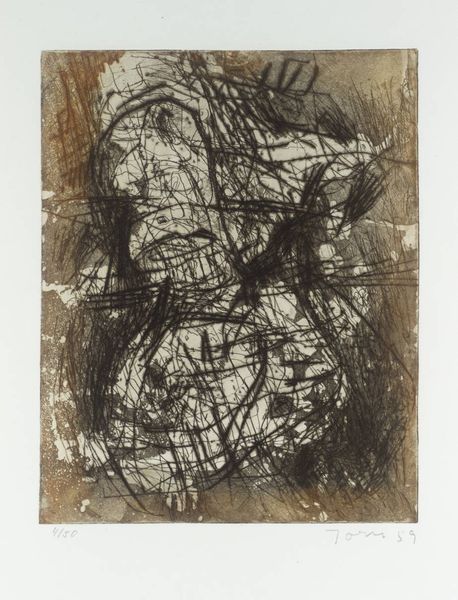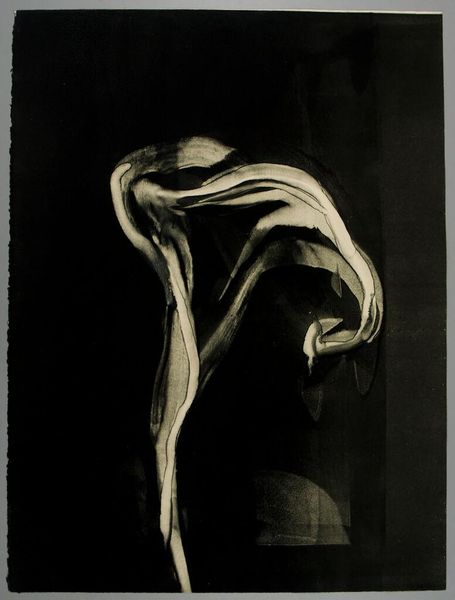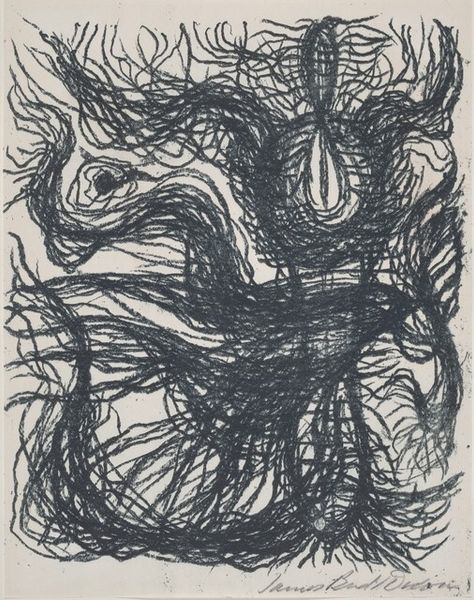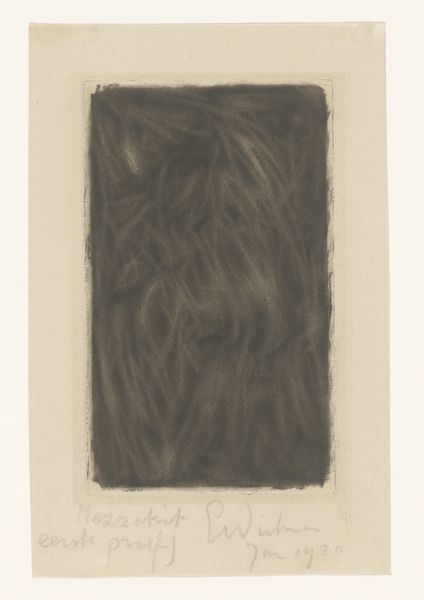
drawing, acrylic-paint
#
drawing
#
negative space
#
acrylic-paint
#
acrylic on canvas
#
geometric
#
abstraction
#
line
#
portrait drawing
#
portrait art
#
monochrome
Dimensions: sheet: 16.7 × 14.2 cm (6 9/16 × 5 9/16 in.)
Copyright: National Gallery of Art: CC0 1.0
Curator: So, here we have Jay Rivkin's "Arcanum" from 1971, an intriguing abstract piece crafted with acrylic paint. What springs to mind for you upon seeing this? Editor: Immediate impression? It's eerie, yet compelling. Looks like the echo of a scream caught in monochrome. Curator: I find that the dynamism in the lines creates a stark tension. It feels almost architectural, a skeletal framework exposed against the void. The stark contrasts of black and white emphasize the linear forms, wouldn't you agree? Editor: Absolutely, that binary opposition of dark and light is essential. The black serves as more than just a backdrop; it's an active agent, pushing forward those swirling, almost frantic white lines. Curator: It certainly showcases Rivkin's command of line as a compositional element. See how the negative space works? The strategic voids within the swirling structure contribute to a sense of depth and ambiguity. It invites us to ponder the boundaries between form and formlessness. Editor: Agreed. The voids breathe life into it. But it’s also somewhat claustrophobic. It makes me consider that maybe what we interpret as liberation, those airy gaps, are as restrictive as the painted lines. Curator: Interesting take. Given that "Arcanum" hints at something secret or mysterious, might we see those "restrictive" lines as holding back knowledge or feeling? I sense the push and pull between revealing and concealing—between what we see, and what is left unseen, or unknown. Editor: Right, a dance between clarity and obfuscation. Maybe the artist wanted to visualize the weight of unspeakable truths. Those truths can suffocate, no? Or maybe he just thought it looked cool. Never underestimate the sheer aesthetic impulse. Curator: Fair point. Either way, the beauty lies in its multiplicity, how it elicits a range of subjective experiences. The technical skill with which Rivkin employs acrylic to achieve such expressive strokes makes it equally worth admiring on a formal level, whatever your interpretive bent. Editor: It is, undeniably, striking. "Arcanum" is one of those works that stays with you, even if you're not entirely sure why. I leave this experience now both intrigued and unsettled.
Comments
No comments
Be the first to comment and join the conversation on the ultimate creative platform.
